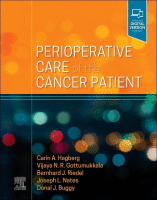Physical Address
304 North Cardinal St.
Dorchester Center, MA 02124

Introduction Pain is one of the most common symptoms reported in cancer patients. This pain can be nociceptive (somatic or visceral) or neuropathic, or a combination of these. Chronic pain can arise secondary to the tumor burden itself or to…

Introduction Postoperative pain management is an integral component of the perioperative management of patients requiring surgery. Perioperative management starts early, even before the patient is admitted to the hospital for surgical procedures. The perioperative care team's preoperative optimization of underlying…

The global incidence of both hematologic and solid organ cancers continues to rise. This is due in part to the aging population and changes in socioeconomic-associated cancer risk factors such as tobacco and alcohol intake, as well as improved diagnostics…

The Surgical Oncologic Patient Burden of Disease The International Agency for Research on Cancer reported that the incidence of cancer in 2018 was estimated at 18.1 million new cases and 9.6 million deaths. The cumulative risk for developing cancer is…

Introduction Rapid response teams arose out of the realization that inpatients are at risk for serious adverse events that were usually preceded by physiologic signs of instability that were not always recognized by ward staff. , These teams have evolved…

According to the National Cancer Institute, an estimated 1.7 million new cases of cancer were diagnosed in the United States in 2018, and more than 600,000 people died from the disease. In fact, cancer is the leading cause of death…

Introduction The surgical population is aging at a faster rate than the general population. A significant proportion of this group will undergo cancer surgery; in 2030 it is estimated that more than 75% of cancer patients will be aged over…

Introduction The world’s population is aging at an unprecedented rate with the number of older people growing at a faster rate than all other age groups. By 2050, one in six people will be over the age of 65 (16%),…

Introduction Palliative surgery is “… used with the primary intention of improving quality of life or relieving symptoms caused by advanced disease. Its effectiveness is judged by the presence and durability of patient-acknowledged symptom resolution.” Surgical treatment decisions for patients…

Background Oncologic surgical emergency may be defined as an acute, potentially life-threatening condition arising from cancer pathology, e.g., obstruction of hollow viscera, bleeding from the tumor, or its treatment such as cecal perforation in a neutropenic patient. Understanding the pathophysiology…